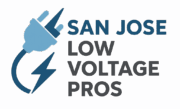How to Control Low Voltage: A Complete Guide for Safer and Smarter Electrical Systems
If you’ve ever wondered how to control low voltage safely and effectively, you’re not alone. Low voltage systems play a big role in homes, offices, and industrial setups — from lighting and security systems to communication networks and smart devices. Understanding how to manage and control low voltage can help you improve energy efficiency, prevent electrical issues, and extend the life of your equipment. Experienced low voltage contractors in San Jose can help ensure your electrical systems remain safe, efficient, and code-compliant.
What Is Low Voltage?
In simple terms, low voltage refers to electrical systems that operate below 50 volts (AC) or 120 volts (DC). These systems are commonly used for lighting, doorbells, thermostats, CCTV cameras, alarms, intercoms, and home automation.
Examples include:
- 12V or 24V lighting systems
- 48V telecommunications equipment
- 5V USB-powered electronics
Low voltage is considered safer than standard household current, but it still requires proper design and control to prevent faults, signal loss, or interference.
Why Controlling Low Voltage Matters
Proper low voltage control ensures your system operates efficiently and safely. It minimizes the risk of overheating, voltage drops, or damage to sensitive components. Whether you’re powering LED lighting, data cabling, or security systems, maintaining stable voltage is essential for performance and safety.
Some key benefits of effective low voltage control include:
- Increased energy efficiency
- Better system reliability
- Enhanced safety for users and equipment
- Longer lifespan for cables and devices
- Consistent performance across all connected systems
Common Low Voltage Systems
Low voltage systems are everywhere in modern infrastructure. Some of the most common types include:
- Security systems: CCTV cameras, alarms, and access controls
- Communication networks: Ethernet cabling, intercoms, and Wi-Fi routers
- Lighting systems: LED fixtures, landscape lighting, and architectural lights
- Audio/Video systems: Home theaters, PA systems, and conference room setups
- Building automation: HVAC controls, sensors, and smart home devices
Each of these systems requires the right voltage level, wiring design, and control method to operate safely.
How to Control Low Voltage Effectively
Here are some key methods and best practices for controlling low voltage systems:
1. Use Voltage Regulators and Transformers
Voltage regulators keep electrical output steady, while transformers step voltage up or down to match the requirements of your equipment. This prevents fluctuations that could damage sensitive devices.
2. Install Proper Power Supplies
Always use power supplies rated for your specific voltage system — for example, a 12V DC supply for LED lighting or a 24V supply for certain sensors. Avoid overloading or mixing voltage ratings.
3. Apply Low Voltage Switches and Dimmers
Low voltage lighting systems often use compatible switches, dimmers, and relays designed for their specific voltage range. These controls allow you to adjust brightness and energy usage safely.
4. Use Relays and Contactors for Automation
In smart systems, relays help manage the flow of current between high and low voltage circuits. This enables automation and remote control without direct electrical contact, improving safety and efficiency.
5. Implement Circuit Protection Devices
Fuses, circuit breakers, and surge protectors prevent damage from short circuits or overloads. Even in low voltage systems, protection is essential to avoid costly failures or fire hazards.
6. Test and Monitor Your System Regularly
Use a multimeter or voltage tester to ensure your low voltage circuits are delivering the correct output. Routine inspection helps catch loose connections, corrosion, or power drops early.
Common Mistakes to Avoid
Even though low voltage systems are safer, there are still pitfalls to watch out for:
- Using the wrong power supply or transformer
- Mixing AC and DC wiring
- Running low voltage cables too close to high voltage lines (causes interference)
- Using undersized cables that cause voltage drop
- Skipping fuse or breaker protection
Avoiding these mistakes can save you from unnecessary repairs and safety risks. Before applying control methods, it’s essential to know how to identify problems. Learn how to check for low voltage wiring safely and accurately.
Who Should Install or Maintain Low Voltage Systems?
While some small low voltage tasks are DIY-friendly (like installing landscape lights), complex systems — such as CCTV networks, structured cabling, or smart home wiring — should always be handled by a licensed low voltage contractor.
Certified professionals understand California’s low voltage codes, fire safety standards, and proper cable routing techniques to ensure everything runs efficiently and passes inspection.
When to Consider Upgrading Your Low Voltage System
You might need an upgrade if you notice:
- Inconsistent lighting brightness
- Camera signal loss or network dropouts
- Overheating power supplies
- Outdated cabling or connectors
- Added devices that strain your existing power setup
Upgrading your low voltage infrastructure can improve performance, efficiency, and overall safety.
Final Thoughts
Controlling low voltage effectively isn’t just about managing power — it’s about ensuring safety, reliability, and long-term performance for your entire electrical and network system. By using the right equipment, following proper installation practices, and working with certified experts, you can create a low voltage setup that’s efficient, compliant, and built to last. Once you’ve established control measures, you can also test a low voltage motor to verify system performance and efficiency.
If you’re in California and need help with low voltage installation, maintenance, or control systems, reach out to your local licensed specialists for expert service and guidance.
